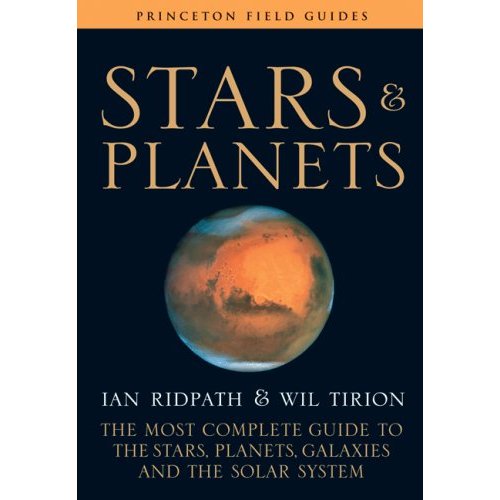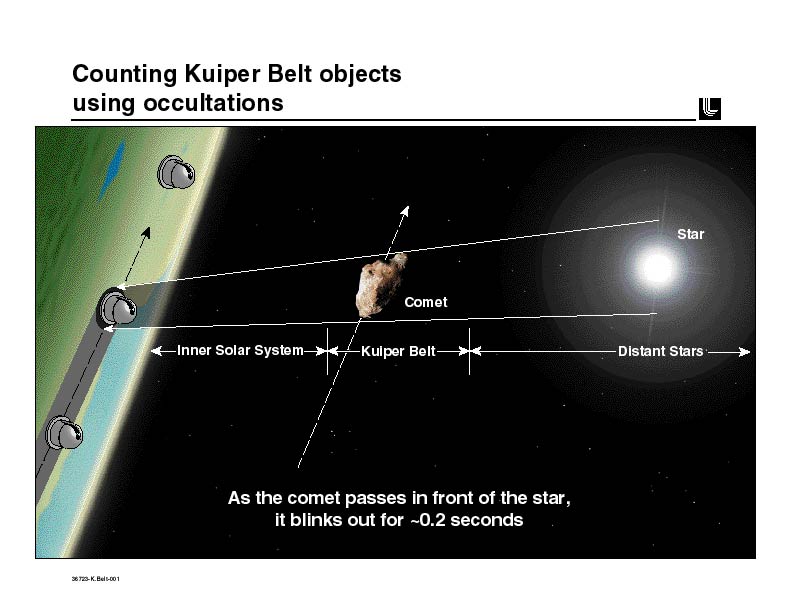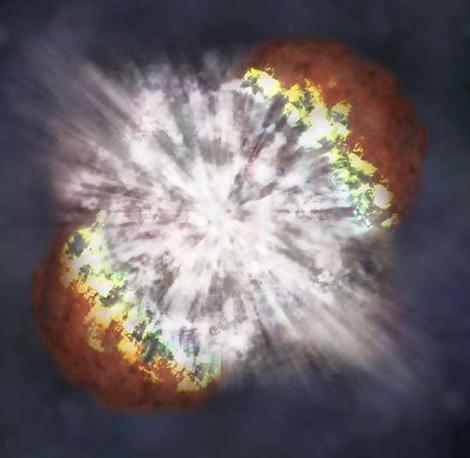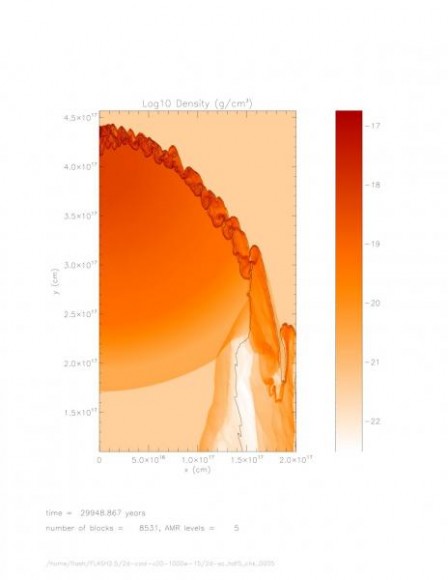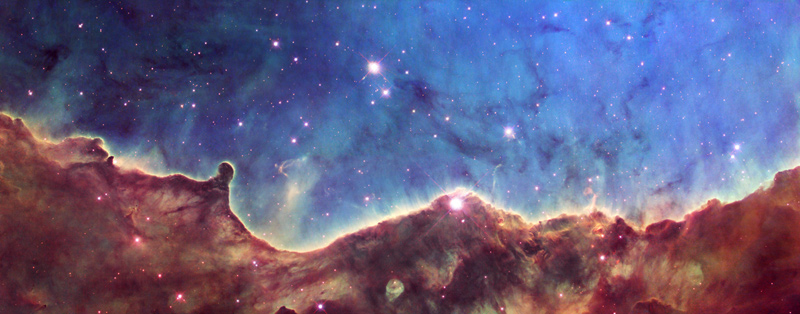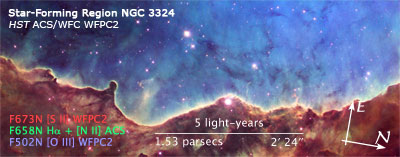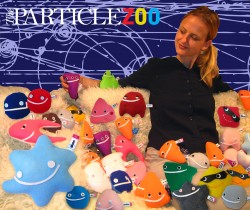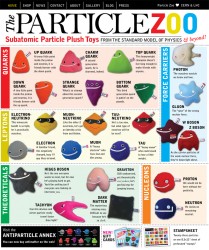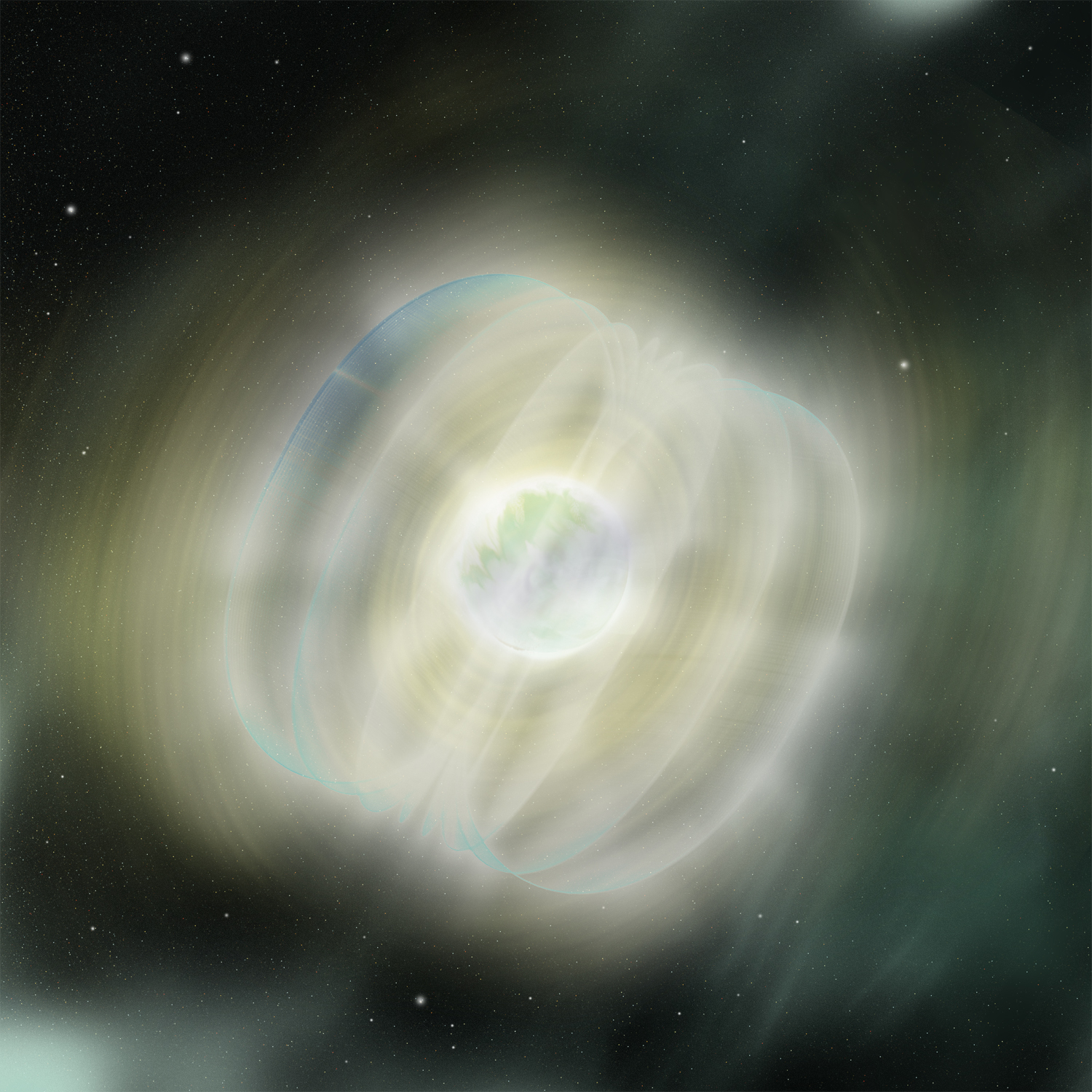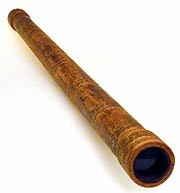Greetings, fellow SkyWatchers! It’s Friiiiiiday… And time to head out to the Moon to begin some lunar exploration. Why not? This weekend commemorates Robert Goddard’s birthday! While we’re rocketing skyward, we’ll take a look at a great globular cluster that’s easy in both binoculars and telescopes, plus a few great stars you might or might not know about. For lucky viewers in South Africa and Australia? Head’s up for an Antares occultation! Are you ready? Then let’s head out into the night….
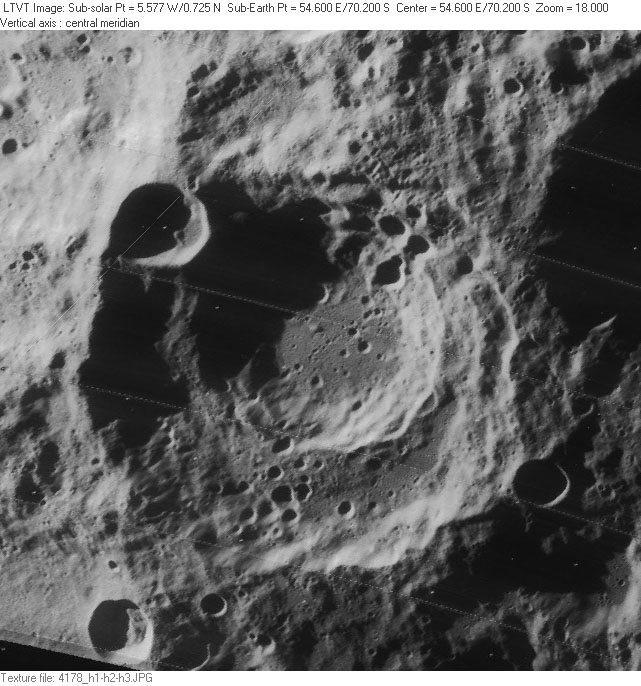 Friday, October 3, 2008 – Tonight we’ll begin on the lunar surface and go out on a limb – the southeastern limb – to have a look at an unusual crater. Named for the French agrochemist and botanist Jean-Baptiste Boussingault, this elliptical-appearing crater actually spans a handsome 71 kilometers. What makes Boussingault so unusual is that it is home to its own large interior crater – A. This double-ring formation gives it a unique stepped, concentric look that’s worth your time!
Friday, October 3, 2008 – Tonight we’ll begin on the lunar surface and go out on a limb – the southeastern limb – to have a look at an unusual crater. Named for the French agrochemist and botanist Jean-Baptiste Boussingault, this elliptical-appearing crater actually spans a handsome 71 kilometers. What makes Boussingault so unusual is that it is home to its own large interior crater – A. This double-ring formation gives it a unique stepped, concentric look that’s worth your time!
Now wait for the Moon to wester a bit and we’ll return to Pegasus and the incredible M15. Although skies are a bit bright, you can still have a very satisfactory look at M15 through any size binoculars or telescope.
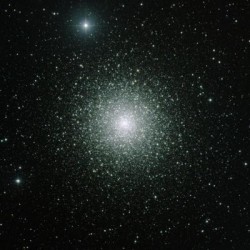 You can find it easily just about two fingerwidths northwest of red Epsilon Pegasi – Enif (RA 21 29 58 Dec +12 10 00). Shining brightly at magnitude 6.4, low power users will find it a delightfully tight ball of stars, but scope users will find it unique. As resolution begins, sharp-eyed observers will note the presence of a planetary nebula – Pease 1. This famous X-ray source you have just seen with your eyes may have supernova remnants buried deep inside…
You can find it easily just about two fingerwidths northwest of red Epsilon Pegasi – Enif (RA 21 29 58 Dec +12 10 00). Shining brightly at magnitude 6.4, low power users will find it a delightfully tight ball of stars, but scope users will find it unique. As resolution begins, sharp-eyed observers will note the presence of a planetary nebula – Pease 1. This famous X-ray source you have just seen with your eyes may have supernova remnants buried deep inside…
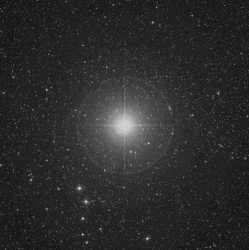 When we’re done? Let’s go have a look at Gamma Aquilae just for the heck of it. Just northwest of bright Altair, Gamma (RA 19 46 15 Dec +10 36 47) has the very cool name of Tarazed and is believed to be over 300 light-years away. This K3-type giant will show just a slight yellow coloration – but what really makes this one special is the low power field! Enjoy it in binoculars or drop in your favorite panoramic eyepiece and just relax… Sometimes there is peace and contentment in the light.
When we’re done? Let’s go have a look at Gamma Aquilae just for the heck of it. Just northwest of bright Altair, Gamma (RA 19 46 15 Dec +10 36 47) has the very cool name of Tarazed and is believed to be over 300 light-years away. This K3-type giant will show just a slight yellow coloration – but what really makes this one special is the low power field! Enjoy it in binoculars or drop in your favorite panoramic eyepiece and just relax… Sometimes there is peace and contentment in the light.
 Saturday, October 4, 2008 – Today in 1957, the USSR’s Sputnik 1 made space history as it became the first manmade object to orbit the earth. The Earth’s first artificial satellite was tiny, roughly the size of a basketball, and weighed no more than the average man. Every 98 minutes it swung around Earth in its elliptical orbit…and changed everything. It was the beginning of the “Space Race.” Many of us old enough to remember Sputnik’s grand passes will also recall just how inspiring it was. Take the time with your children or grandchildren to check www.heavens-above.com for visible passes of the ISS, and think about how much our world has changed in just over half a century!
Saturday, October 4, 2008 – Today in 1957, the USSR’s Sputnik 1 made space history as it became the first manmade object to orbit the earth. The Earth’s first artificial satellite was tiny, roughly the size of a basketball, and weighed no more than the average man. Every 98 minutes it swung around Earth in its elliptical orbit…and changed everything. It was the beginning of the “Space Race.” Many of us old enough to remember Sputnik’s grand passes will also recall just how inspiring it was. Take the time with your children or grandchildren to check www.heavens-above.com for visible passes of the ISS, and think about how much our world has changed in just over half a century!
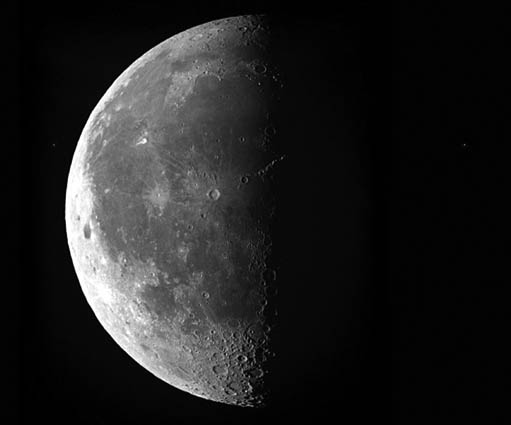 Do you remember the Professor Burg who discovered Antares’ companion during an occultation? Well, tonight we’re going to become a whole lot more familiar with the good professor, because it’s about to happen again! For almost all observers, at some time brilliant red Antares will be less than half a degree to the north of tonight’s crescent Moon. For South African and Australia, this will be a spectacular occultation, so be sure to check IOTA for precise times and locations on this universal date.
Do you remember the Professor Burg who discovered Antares’ companion during an occultation? Well, tonight we’re going to become a whole lot more familiar with the good professor, because it’s about to happen again! For almost all observers, at some time brilliant red Antares will be less than half a degree to the north of tonight’s crescent Moon. For South African and Australia, this will be a spectacular occultation, so be sure to check IOTA for precise times and locations on this universal date.
While we’re waiting on the event, let’s have a look at the crater named for Burg as we begin by using past study crater Posidonius as our guide. How many more of these craters can you identify?
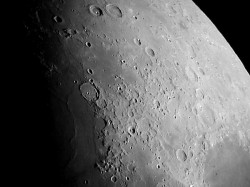 If you walk along the terminator to the northwest, you’ll see the punctuation of 40 kilometer wide Burg just emerging from the shadows. While it doesn’t appear to be a grand crater like Posidonius, it has a redeeming feature: it’s deep – really deep. If Burg were filled with water here on Earth, it would require a deep submergence vehicle like ALVIN to reach its 3680 meter floor! This class II crater stands nearly alone on an expanse of lunarscape known as Lacus Mortis. If the terminator has advanced enough at your time of viewing, you may be able to see this walled-plain’s western boundary peeking out of the shadows.
If you walk along the terminator to the northwest, you’ll see the punctuation of 40 kilometer wide Burg just emerging from the shadows. While it doesn’t appear to be a grand crater like Posidonius, it has a redeeming feature: it’s deep – really deep. If Burg were filled with water here on Earth, it would require a deep submergence vehicle like ALVIN to reach its 3680 meter floor! This class II crater stands nearly alone on an expanse of lunarscape known as Lacus Mortis. If the terminator has advanced enough at your time of viewing, you may be able to see this walled-plain’s western boundary peeking out of the shadows.
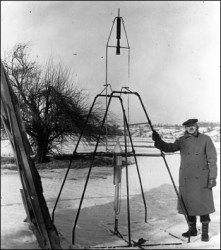 Sunday, October 5, 2008 – Today marks the birthdate of Robert Goddard. Born in 1882, Goddard is known as the father of modern rocketry – and with good reason. In 1907, Goddard came into the public eye when a cloud of smoke erupted from the basement of the physics building in Worcester Polytechnic Institute, from which he had just fired a powder rocket. By 1914, he had patented the use of liquid rocket fuel, and the design of two- or three-stage solid fuel rockets. His work continued as he sought methods of lofting equipment ever higher, and by 1920 he had envisioned his rockets reaching the Moon. Among his many achievements, he proved that a rocket would work in a vacuum. By 1926 the first scientific equipment went along for the ride; by 1932, Goddard was guiding those flights; and by 1937 his motors were pivoting on gimbals and being controlled gyroscopically. His lifetime of work went pretty much unnoticed until the dawn of the Space Age, but in 1959 (14 years after his death) he received acclaim at last as NASA’s Goddard Space Flight Center was established in his memory.
Sunday, October 5, 2008 – Today marks the birthdate of Robert Goddard. Born in 1882, Goddard is known as the father of modern rocketry – and with good reason. In 1907, Goddard came into the public eye when a cloud of smoke erupted from the basement of the physics building in Worcester Polytechnic Institute, from which he had just fired a powder rocket. By 1914, he had patented the use of liquid rocket fuel, and the design of two- or three-stage solid fuel rockets. His work continued as he sought methods of lofting equipment ever higher, and by 1920 he had envisioned his rockets reaching the Moon. Among his many achievements, he proved that a rocket would work in a vacuum. By 1926 the first scientific equipment went along for the ride; by 1932, Goddard was guiding those flights; and by 1937 his motors were pivoting on gimbals and being controlled gyroscopically. His lifetime of work went pretty much unnoticed until the dawn of the Space Age, but in 1959 (14 years after his death) he received acclaim at last as NASA’s Goddard Space Flight Center was established in his memory.
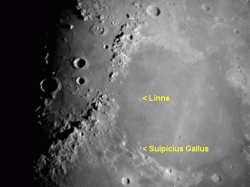 Tonight let’s rocket to the Moon to explore a binocular curiosity located on the northeast shore of Mare Serenitatis. Look for the bright ring of Posidonius, which contains several equally bright points both around and within it. Now look at Mare Crisium and get a feel for its size. A little more than one Crisium’s length west of Posidonius you’ll meet Aristotle and Eudoxus. Drop a similar length south and you will be at the tiny, bright crater Linne on the expanse of Mare Serenitatis. So what’s so cool about this little white dot? With only binoculars you are resolving a crater that is one mile wide, in a seven mile wide patch of bright ejecta – from close to 400,000 kilometers away!
Tonight let’s rocket to the Moon to explore a binocular curiosity located on the northeast shore of Mare Serenitatis. Look for the bright ring of Posidonius, which contains several equally bright points both around and within it. Now look at Mare Crisium and get a feel for its size. A little more than one Crisium’s length west of Posidonius you’ll meet Aristotle and Eudoxus. Drop a similar length south and you will be at the tiny, bright crater Linne on the expanse of Mare Serenitatis. So what’s so cool about this little white dot? With only binoculars you are resolving a crater that is one mile wide, in a seven mile wide patch of bright ejecta – from close to 400,000 kilometers away!
Tonight in 1923, Edwin Hubble was also busy as he discovered the first Cepheid variable in the Andromeda Galaxy. Hubble’s discovery was crucial in proving that the objects once classed as “spiral nebulae” were actually independent and external stellar systems like our own Milky Way.
While we’re out, let’s have a look at a Mira type variable, as we look about halfway between Beta and Gamma Cygni for Chi (RA 19 50 33 Dec +32 54 51).
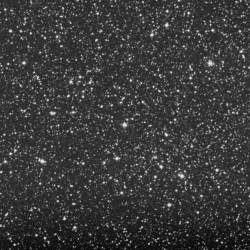 Noted for being the second long-term variable discovered (by Gottfried Kirch in 1868), Chi is visible to the unaided eye when at maximum – but demands a telescope at minimum. Fluxing between magnitude 4 and 12, you’ll know if you’ve caught it at its lowest point when you can’t distinguish it from background stars! Of course, this is another wonderful cosmic joke on Bayer – for it was several years until the star he classed as visual returned to view. Maximum or minimum? Enjoy your own perceptions of this lovely red star!
Noted for being the second long-term variable discovered (by Gottfried Kirch in 1868), Chi is visible to the unaided eye when at maximum – but demands a telescope at minimum. Fluxing between magnitude 4 and 12, you’ll know if you’ve caught it at its lowest point when you can’t distinguish it from background stars! Of course, this is another wonderful cosmic joke on Bayer – for it was several years until the star he classed as visual returned to view. Maximum or minimum? Enjoy your own perceptions of this lovely red star!
Now, as the days pass… Watch as Jupiter and the Moon draw closer and then part company! It’s a lovely sight that doesn’t require any special equipment and makes for a relaxing evening of stargazing. Until next time, I wish you clear skies and a great weekend!
This week’s awesome images are: Crater Boussingault – Credit: Jim Mosher (LPOD), M15 – Credit: NOAO/AURA/NSF, Gamma Aquilae – Credit: Palomar Observatory, courtesy of Caltech, Sputnik 1 – Credit: NASA, 2005 Antares Occultation – Credit: John Chumack, Detail view of Posidonius – Credit: Greg Konkel, Robert Goddard – Credit: NASA, Crater Linne – Credit: Greg Konkel Annotations: Tammy Plotner and Chi Cygni at minimum (center of field) – Credit: Palomar Observatory, courtesy of Caltech. Many, many thanks! Each time we see these images it improves our understanding of what we look at and what we are looking for and their use is greatly appreciated!!

